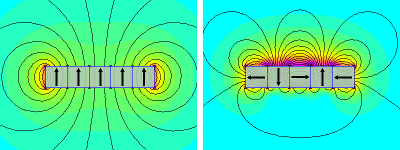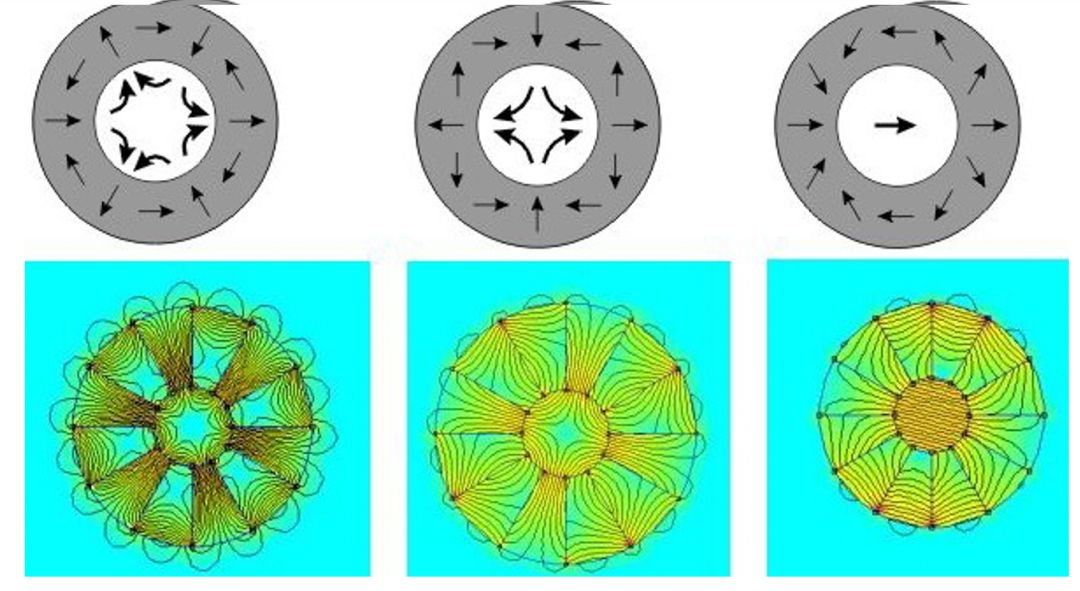The Hellebeck array consists of n52 magnet materials. By arranging permanent magnets with different magnetizing directions according to a certain law, it is able to converge the magnetic lines of force on one side of the magnet and weaken the magnetic lines of force on the other side, so as to obtain a more ideal one-sided magnetic field. This is of great significance in engineering, and Hale-Buick arrays are widely used in industrial fields such as nuclear magnetic resonance, magnetic levitation, and permanent magnet special motors due to their excellent magnetic field distribution characteristics.

On the left is a single magnet with the north pole all the way up, and the strength of the magnetic field can be seen in the colors at the bottom and top of the magnet. On the right is a Hellebeck array with a higher magnetic field at the top of the magnet and a relatively weak one at the bottom. (The strong-side surface magnetic field strength of a Hellebeck array magnet set of the same volume is about √2 times (i.e., 1.4 times) that of a conventional single magnet, especially when the thickness of the magnet in the magnetizing direction is between 4 and 16 mm.)
Forms and Applications of the Heilbeck Array
1.Linear Array
Linear is the most basic form of Halbach array composition, and this type of array magnet can be viewed as a combination of a radial array and a tangential array, as shown below.

2.circular array
A circular Halbach array can be viewed as a combination of linear Halbach arrays that meet head to tail to form a circular shape.

In permanent magnet motors, permanent magnet motors using Halbach array structure have air gap magnetic field closer to sinusoidal distribution than conventional permanent magnet motors, and with the same amount of permanent magnet material, Halbach permanent magnet motors have higher air gap magnetic density and lower iron loss. In addition, Halbach circular arrays are widely used in permanent magnet bearings, magnetic refrigeration equipment and magnetic resonance equipment.
Fabrication and production method for Hellebore arrays
Method 1: According to the topology of the array, pre-magnetized magnet segments are glued together using a magnet glue, which is clamped using a mold because of the strong mutual repulsion between the magnet segments. This method is less efficient, but easier to realize and more suitable for laboratory research.
Method 2: According to the topology of the magnet arrays, the pre-magnetized magnet segments are glued together using magnet adhesive, which is clamped using a mold during gluing because of the strong mutual repulsion between the magnet segments. This method is less efficient but easier to realize and is more suitable for the laboratory research stage.

Method 3: Heilbeck magnets field distribution is achieved by utilizing a specific shape of winding array as shown below.
